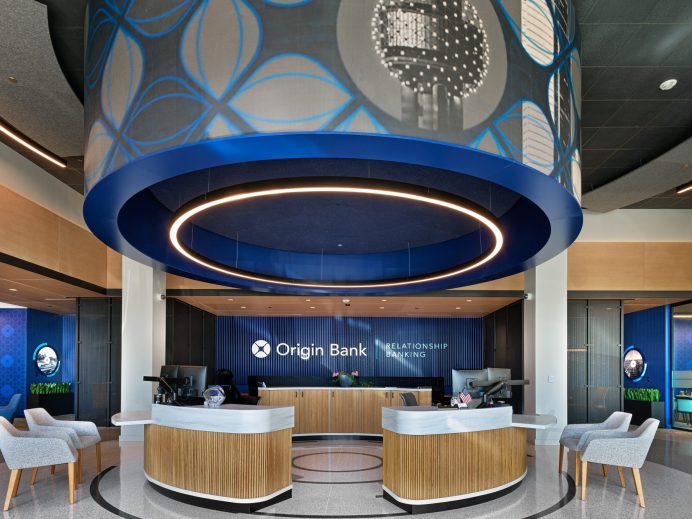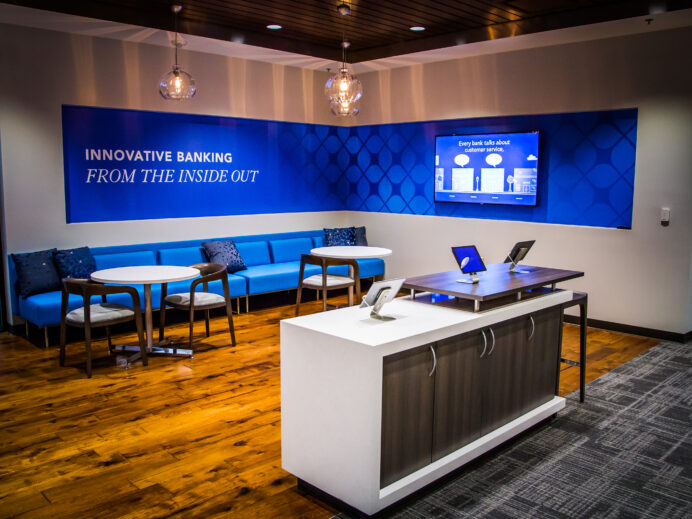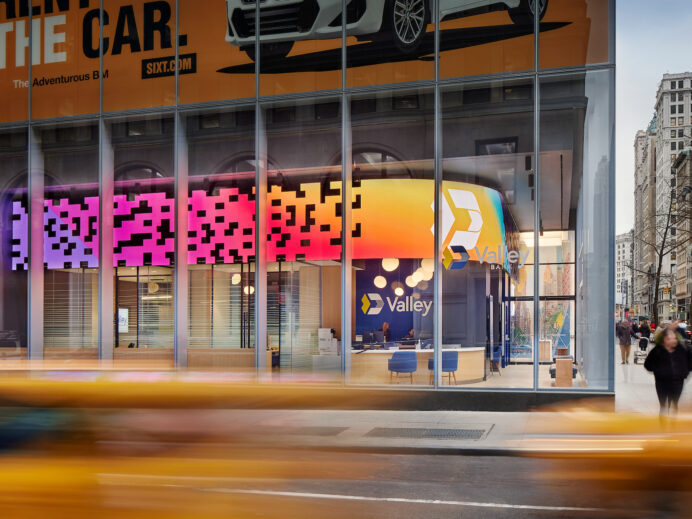Emerging in retail banking in the early 2000s, digital signage was commonly considered a logical extension of traditional in-branch communications
Banks and credit unions that had been lining their walls inside the branch with static posters and fixtures began deploying digital signage displays –essentially commercial-grade televisions – as a way to promote relevant products and services. It made total sense. A way to meet the customer where they are.
What became clear is that dynamic, animated or motion messages are far more successful at attracting more attention and generating more engagement than static signage. Flexible and programmable, digital displays can cycle through multiple messages that – in the same visual real estate – exceed the capacity of static branch merchandising. What could possibly be better than that? Quite a bit, it turns out.
Using digital signage solely for the purpose of promoting products and services is really just scratching the surface. Retail banking digital signage in 2022 can (and should) be so much more. Just as in other retail settings, the branch environment is rich with communication opportunities, given the consistent flow of customers and prospects and the potential for high-value consultations, not just transactions.
To help expand the effectiveness of your bank or credit union’s customer-facing digital signage and in-branch marketing, we’ve gathered together our top-five best practices you can implement immediately to up your digital signage savvy.
#1 – Become More Customer Centric
Most bank digital signage playlists are populated with content that reflects what the bank wants to promote. Yet 72% of retail banking consumers expect an experience “built around my needs” according to the PwC Retail Banking report. That means messaging must provide value, not simply sell banking products. Having financial wellness messages, for example, programmed alongside aligned products is a much better way to engage with your audiences. Develop a message strategy that appeals to your customers, not just your marketing calendar.
#2 – Know Your Audience
To create more resonant messaging, it’s essential to understand who is walking in to each of your neighborhood branches. While PwC finds that 44% of banks have customer and market segmentation models in place, financial institutions must have an underlying strategy to maximize their use. Once adopted, regularly re-visiting customer segmentation models to ensure they remain accurate is essential to ensure your in-branch communications maintain high relevance with your target audience.
#3 – Anticipate Audience Mindset
It’s easy to fall into the trap of thinking that by simply communicating the facts of any particular product or service, people will naturally want to sign up. Not everyone who walks into a branch is left-brain centric (tending towards logic, analysis and data). There are right-brain dominant people you need to appeal to, as well, and if your message doesn’t creatively speak in more intuitive and emotional terms, you won’t reach them. Anticipating and understanding your audience’s mindset is critical when developing an impactful in-branch marketing strategy.
#4 – Rightsize Your Story
Yes, it’s true; a digital signage network is a valuable communication asset… the very definition of “owned media.” The natural tendency is to want to maximize your investment in this channel by loading up every playlist with tons of content about the great products and services that your financial institution offers. You might think that is the best way to get the most out of in-branch digital signage, but you’d be wrong. Harkening back to best practice #1, do people really want to be exposed to nothing but endless promotion about your bank? No, they do not.
An effective digital signage playlist is one that prioritizes compelling stories that illustrate how a bank’s products and services empower customers to do more in their financial lives. It’s what your customers want to hear and aligns well with solutions your bank can provide. Assuming that the average customer dwell time is roughly three minutes and that this represents the time your customers are exposed to branch communications via digital signage, then it’s essential to be very purposeful about the messages your customer sees during that very short period.
#5 – You Need an Editor-in-Chief
Chances are, if you’ve approached digital signage as mostly a merchandising promotional vehicle, and you’ve playlisted as many messages as you could produce regardless of dwell time, you haven’t yet found the need to make tough editorial decisions about what should play and what should not. However, if your goal is to leverage digital signage to support improved in-branch experiences, it’s imperative for your institution to have an engaged editorial process and decision-making body (whether it’s through an individual or a small committee).
An Editor-in-Chief can help balance the goals of a banking digital signage program – improved merchandising metrics, better customer experience, and stronger brand advocacy, for example – so that the content is always representative of and linked to organizational objectives and brand performance. The editorial role doesn’t have to be a full-time job, but a part-time Editor-in-Chief should be diligent about prioritizing messaging for demographics, geography, branch zone, and daypart and continually assess signage performance.
Having established parameters developed and enforced by this Editor-in-Chief function will help your bank’s digital signage program have more relevance, greater engagement and stronger purpose. Centering customer need states and understanding audience mindset are essential steps prior to deploying signage. Using storytelling fundamentals that match audience dwell time will help make digital signage do more. Ultimately by applying Digital Signage 2.0 principles, innovative banks and credit unions can better maximize their investment in digital signage and create a more effective branch experience for their customers.
For more information on digital signage and optimizing branch communications strategies, get in touch with the experts at Adrenaline.
Adrenaline is an end-to-end brand experience company serving the financial industry. We move brands and businesses ahead by delivering on every aspect of their experience across digital and physical channels, from strategy through implementation. Our multi-disciplinary team works with leadership to advise on purpose, position, culture, and retail growth strategies. We create brands people love and engage audiences from employees to customers with story-led design and insights-driven marketing; and we design and build transformative brand experiences across branch networks, leading the construction and implementation of physical spaces that drive business advantage and make the brand experience real.



